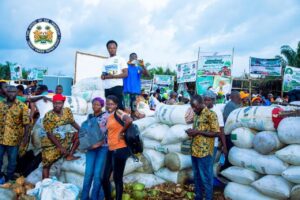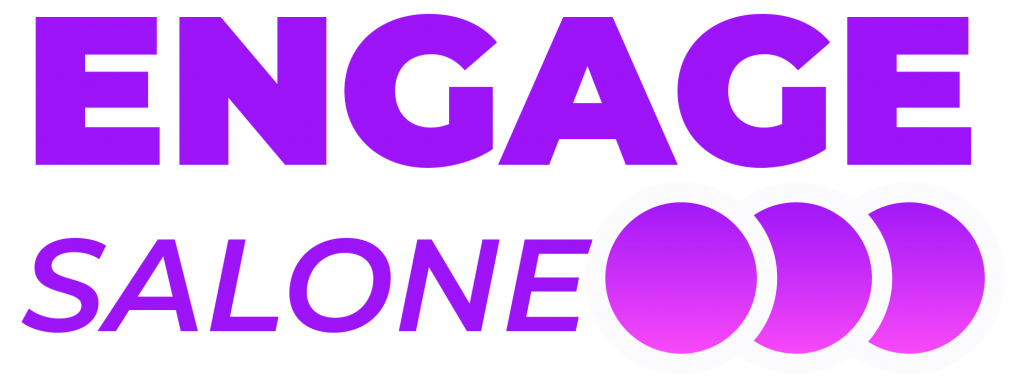The government’s flagship programme for food security in Sierra Leone, Feed Salone turned two in October, with vibrant celebrations held during this year’s World Food Day event in Kambia. Two years on, it is worth taking stock of the progress made, highlighting the gains so far while also pointing out the gaps that remain. It is equally important to remember that numbers alone do not tell the full story.
Let us start with the numbers. According to the Feed Salone Year-Two report, rice importation decreased by 16%, while national rice output increased by 8%. The report further notes that these improvements contributed to a 26% decline in the price of imported rice and a 12% reduction in the price of locally grown rice. The cost of onions also reportedly dropped by 24%, all within the programme’s second year.
Over USD 1 billion has been mobilised in total for Feed Salone, with USD 280 million already in the bag. The Bank of Sierra Leone has also launched a USD 10 million Agriculture Credit Facility aimed at supporting private businesses to invest in agricultural machinery and other productivity-enhancing equipment. At the World Food Day event in Kambia, the President launched the Livestock and Livelihoods Development Project, funded by the IFAD, the Islamic Development Bank, and the OPEC Fund, with an investment of USD 105.5 million over eight years. All round progress has been reported—from infrastructure to seeds, inputs and private sector investment. A Promising Picture. But What Lies Beneath?
These figures are, by all standards, impressive. But let us pause and look beyond the surface. Mobilising a billion dollars in pledges reflects a high level of international confidence in the country’s agricultural reform agenda. When over 70% of that amount remains in pledges however, optimism must be tempered with caution. The speed and consistency with which the remaining funds are raised and subsequently released will largely determine whether progress continues steadily or begins to stall. The Agriculture Credit Facility is a welcome initiative designed to encourage private investment. What we don’t know is how this amount stacks up against what is actually needed.
Even with the impressive numbers—at least on paper—you only need to talk to ordinary Sierra Leoneans to understand how high the overall cost of living remains. Food prices remain high across most commodities, and although inflation has decreased, households are struggling more than ever. There are several ways to explain this, but the most obvious is stagnant income levels. The minimum wage has increased only once in a decade—from Le 500,000 in 2015 to Le 800 (New Leones) in 2023. That represents a 60% increase over ten years, yet it still falls below the international poverty line of USD 2.15 per day. During the same period, inflation has consistently been in double digits, peaking at almost 50% in 2023 before declining to around 6% this year.
Although inflation has slowed considerably and some food prices have decreased, it remains challenging for these changes to translate into tangible relief for the average person. The simple reason is that people’s earnings have not kept pace with prices. Civil servants, farmers, and informal workers continue to earn roughly the same as they did years ago, while costs for nearly everything have soared. What people can actually afford to buy with their income today is significantly less than before. The prices of fuel, transportation, and food have risen sharply, and the country still imports most manufactured goods, which means it remains highly exposed to global price shocks. Housing, utilities, and related living expenses have remained high or continued to increase.
According to a WFP Market Prices Bulletin, a monthly minimum wage could purchase up to 41 kilograms of rice in June—more than what it could buy at the same time last year. Here is how statistics mask reality. For an average Sierra Leonean household that consumes rice at least twice a day—if they can afford it, 41 kilograms does not go anywhere. And how does a minimum wage earner manage to pay for everything else—vegetables, oil, fish, transport, rent, and medical care on top of that? Even if food inflation drops from 40% to 10% while salaries increase by only 5%, the cost of living will still remain extremely high. This is because structural costs in Sierra Leone rarely ever decrease. Once prices for transport, housing, or utilities rise, they seldom come down, regardless of what happens with inflation or food supply.
Feed Salone is making tangible gains in production, but it is still too early to expect a widespread impact on poverty or cost of living. Politicians who talk about these gains need to speak honestly and frankly and not put an empty spoon into people’s mouths—as we say in Krio. Much of the agricultural expansion remains concentrated in specific areas of production, leaving others with low productivity. The benefits of increased production and reduced import dependency, therefore, are not evenly spread across the crops and products. The modest drop in the price of rice, for instance, is quickly offset by the soaring costs of other essential food items such as vegetables, fish, and cooking oil—all of which have become almost unaffordable for the average household. Rural farmers may be producing more, but they are also spending more to transport their goods to market, often through poor road networks, which keeps prices high for consumers.

As the government pushes forward with Feed Salone, it must also address the broader economic conditions that shape how people live. Food security is not only about producing more—it is about ensuring that citizens have the means to afford the food that is produced. This requires effective programmes and policies that confront unemployment, underemployment, low wages, and deep-seated poverty. Feed Salone’s potential will only be fully realised if it is matched with parallel interventions that improve incomes, create jobs, and make essential goods and services affordable. Otherwise, the impressive figures will remain largely symbolic and fail to change our everyday realities.
That said, we are rooting for Feed Salone. It has put agriculture and food systems firmly on the agenda, attracting new partnerships and encouraging both public and private investment in farming and agribusiness. Sierra Leoneans have seen this story before, however. From Operation Feed the Nation to PRSP, Agenda for Change and other well-intentioned programmes, many initiatives have started strong and ended in corruption and failure. This history calls for cautious optimism.


